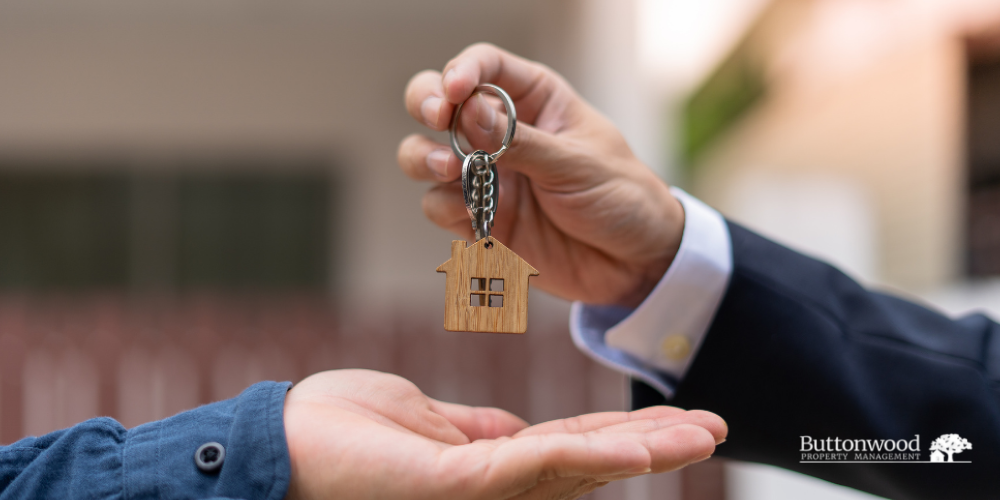Ever heard of or watched people making a substantial fortune on their real estate investments in GTA and wondered what exactly they did to get there?
As many of these successful investors will tell you, it’s a combination of many things; one of them is selecting the right real estate investment strategy.
Even though quite volatile, Toronto’s real estate market has been so favourable to investors. Just a month ago, the Toronto real estate board admitted that the housing market was becoming tighter, marked by a drop in new listings and a rise in home sale prices.
Given the ever-rising population, the board said that the real challenge going forward is going to supply as opposed to demand. Isn’t that good news for investors?
Even better than that, we’ll show you several types of real estate investment strategies you might want to consider as you plan to invest in Toronto. Of course, what’s right for you will depend on how much time you are willing to commit, access to financing, and risk tolerance, among other factors.

House Flipping
On the surface, this strategy sounds really simple: buy a house, fix it, flip, and you’ll make a good fortune, either from the property appreciating in value or from the capital improvements made to it, or both.
But that’s just the tip of the iceberg. There’s a lot more you have to know and do in order to avoid making mistakes that could end up being costly.
In general, the steps and actions you take at the beginning should be geared toward minimizing liabilities/risks and maximizing your profitability.
First, understand that in Toronto and across Ontario, flipping is no longer what it was a couple of years ago, thanks to buyer enlightenment and high property values. Nowadays, the right properties aren’t as common, and when they come around, they are bought almost immediately.
The second thing to note is that there are specific areas that are perfect for house flipping. Spare some time to look at the prices of homes in different neighbourhoods and their history. Along with that, find out which time of the year is suitable for investing in flips.
Thirdly, know your numbers. To avoid paying too much for a property, know what it is worth. Also, find out how much the repairs and upgrades will cost. This way, you’ll be able to determine what an ideal buying price should be.
One of the most prominent principles real estate investors across the world use is the 70%-rule, where you pay not more than 70% of the after-repair value (ARV) of a property, less the repairs.
For example, if a property’s ARV is $200,000 and it requires $30,000 in repairs, applying the said rule would mean that you shouldn’t pay anything above $110,00 ($200,000 X 0.70 = $140,00 – $30,000 = $110,000).
It would actually be better if you make sure you have enough money, time, skills, and knowledge dedicated to this investment.
Of course, the rule we mentioned earlier still stays. Acquire the property when the market is a bit slow. Make it nice and do everything possible to make it attractive, then hold on, probably for a couple of years as you observe the market, and thereafter dispose of it when the market is hot.
Unless it’s an absolute steal, you’ll have to hold on to your property for a while so as to increase the chances of receiving the full profit margin from it.
Buy-and-Hold
Buy-and-hold is one of the most common – and straightforward – real estate investment options. You simply buy a rental property, particularly one that is under the market’s value, then hold it for the medium term, say three to five years, expecting to earn monthly rental income and for it to appreciate in future.
In Toronto, many see this kind of investment as easier compared to other strategies, like house flipping, because one doesn’t really require experience when there are professionals ready to do all the work for you. A good example is a Toronto property management company that doubles up in investment consulting, among other related services.
That aside, you have a variety of options when it comes to properties you can purchase for this purpose. Examples include a vacation rental property, an apartment building, a commercial property, multi-family property, and a turnkey (move-in ready) property, just to name but a few.
Like with house flipping, you have to select the right neighbourhood to invest in, identify the appropriate kind of property among those we’ve just mentioned, and ensure the options you’ve selected make financial sense.
Another amazing thing about a buy-and-hold investment is that it’s relatively easy to finance your purchase, as most lenders offer loans not just for single investments but also for up to seven properties. However, first, familiarize yourself with the different types of buy-and-hold real estate loans available in Ontario and then choose one that fits your needs.
Usually, the recommended return on a buy-and-hold real estate property should be about 9% or more yearly. Your goal should actually be to have renters gradually pay off the loan(s) – plus other property-related expenses – you may have acquired to finance and maintain the property. This will ensure that you eventually have a mortgage-free property in the end and that you earn the rental income indefinitely.
Remember, as much as you can self-manage your property, you stand a chance of making the most out of your investment when you enlist the help of a property management company.
The Hybrid Strategy
Some experts call this strategy hybrid real estate investing. It’s founded on the fact that both the flip and buy-and-hold strategy has their own strengths and weakness. Thus, it focuses on the benefits each of the two strategies has while trying to eliminate the shortcomings.
Here are the four main steps this strategy takes:
Step 1
Purchase a property(s) that needs help, i.e., cosmetic fixes such as countertops, paint, carpet, and the like. Ensure the home is in a good neighbourhood. Toronto, for instance, has a good number of potential neighbourhoods to invest in; e.g., look at Liberty Village & City Place, King West, Yonge St. Line, Yonge and Sheppard, Queens Quay, and Yorkville.
Obviously, each neighbourhood has its own attributes, meaning you have to examine them closely. Look at the available properties, prices, and amenities, among other factors in order to find one that fits your investment needs.
As we mentioned earlier, pay close attention to properties that can be purchased for about 70% of the after-repair value.
Step 2
Upgrade/renovate the home into a rental condition. Note that here’s where the difference comes in. If you were house flipping, your goal would be to remodel the property into one of the best in the neighbourhood so as to attract potential buyers.
But with this strategy, the goal is to make the home more attractive to renters. That means putting more focus on things that make the home more livable and move-in ready. If possible, take a look at the nearby homes that are available for rent to see what they have in relation to curb appeal, kitchen and bathrooms, appliances, and so on.
That way, you’ll know what to upgrade, what to replace, and what not to touch. In the end, you’ll avoid unnecessary expenses.
Step 3
Once you are through with the renovations and upgrades, hold the property for the long-term, rent it and, at the same time, observe the market just to be up to date with what’s happening.
At this point, you have to learn how to be a great and successful landlord if you aren’t one. But if that’s not your cup of tea, you still have the option of leaving all the tasks to a property management company.
It would also be better if you sought more knowledge of how the real estate market in Toronto and the larger Ontario province work. This will help you know whether or not to make a move and also how to go about other serious decisions you may want to make with regard to your property.
Step 4
Sell the property when the market looks favourable. Sometimes, it may not be the exact ‘peak’ you predicted, but when it makes sense to dispose of it, it would be better to do it. Around this time, it won’t be wise to buy another property as the prices will definitely be high. However, the prices will start to fall at some point, and when they do, you can carry on with the cycle.
The Joint Venture
In real estate, a common joint venture is an arrangement where two or more parties agree to combine their resources for the purpose of buying and sometimes selling a property.
Resources, in this case, include not just financial ones but also skills such as analyzing deals, asset management, identifying properties, and so on.
Involvement of all those resources makes it necessary to have a clear and solid plan in place. Also, in order for the venture to run smoothly and achieve its purpose, there is a number of things to be put into consideration.
For example, you have to put everything in writing, come up with ‘partnership’ duties, develop legal agreements, and so on. Conflicts of interest should be eliminated at all costs.
More importantly, make sure your partner has some skin in the game because that will mean they can take more ownership of whatever is involved in the venture. Take some time to understand their ethics and capabilities as well.
More reasons to consider this type of investment strategy include:
- Cost Sharing – a joint venture allows a real estate investors to pursue investments they couldn’t afford on their own. That aside, a good portion of the expenses associated with real estate investing can be cut down when you have a partner(s).
- Risk Sharing – Naturally, there are risks involved with every investment. But you don’t have to assume all of them when you have the opportunity to minimize the impact with the addition of a partner. On top of that, a joint venture can help to reduce the pressure and uncertainty that most investors deal with.
- Skill/Talent Sharing – Sharing knowledge, skills, and talents is one of the greatest advantages this kind of arrangement brings. You could build a dream team, overcome deficiencies, and be more efficient and productive.

Rent-to-Own
Rent-to-own investing is where a tenant rents your property but with the option to buy it. Here’s how it works.
You buy a property, but rather than renting it the traditional way; you look for tenants interested in becoming its future owners. Those interested in this type of arrangement mostly are people with credit issues and/or who lack the money required to make a full down payment.
Once you find one, you, as the property owner, will then set the purchase price before you rent it out. The tenant must agree to pay a certain amount of the fee, which can then become a down payment for the option to acquire the property at a specific predetermined date in future.
That means the renter will be paying the rent and the predetermined amount you’ve agreed upon on top of it, which will then go towards their purchase.
In addition to generating great cash flow, this kind of real estate investment is preferred by investors in Toronto and across Ontario because the tenant pays an amount that is above the market value in exchange for credits that accumulate towards the purchase.
What’s more, tenants who opt for this kind of arrangement are mostly the serious type who will also take good care of the property, knowing that it’s probably their largest and lifetime investment.
Just like we’ve seen with the other real estate investment options, before opting for this idea, make sure the market conditions favour it.
For example, if you are in a hot market where properties are in high demand and the prices are great, chances are you’ll earn a bit less going with rent-to-own as opposed to if you sold off the property normally.
In Summary
These five sums up the five different types of real estate investment strategies available for anyone looking to invest in Toronto and the larger Toronto area. There could be more real estate investment ideas out there, but before you look for the unknown, you are better off giving either of these opportunities a try.
Note that Toronto has plenty of financial institutions ready to finance your investment provided you qualify. As with any investment, don’t forget to do your due diligence.
More importantly, seek professional help when you are in doubt or unsure of the move you want to make. And when doing so, remember to only work with reliable and reputable investment consultants and property management companies with a proven track record.



